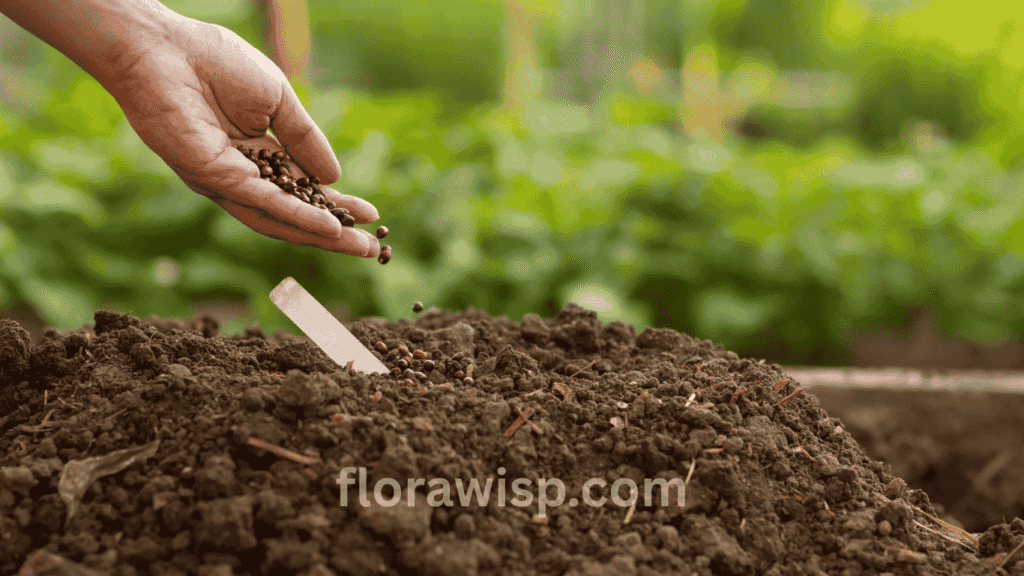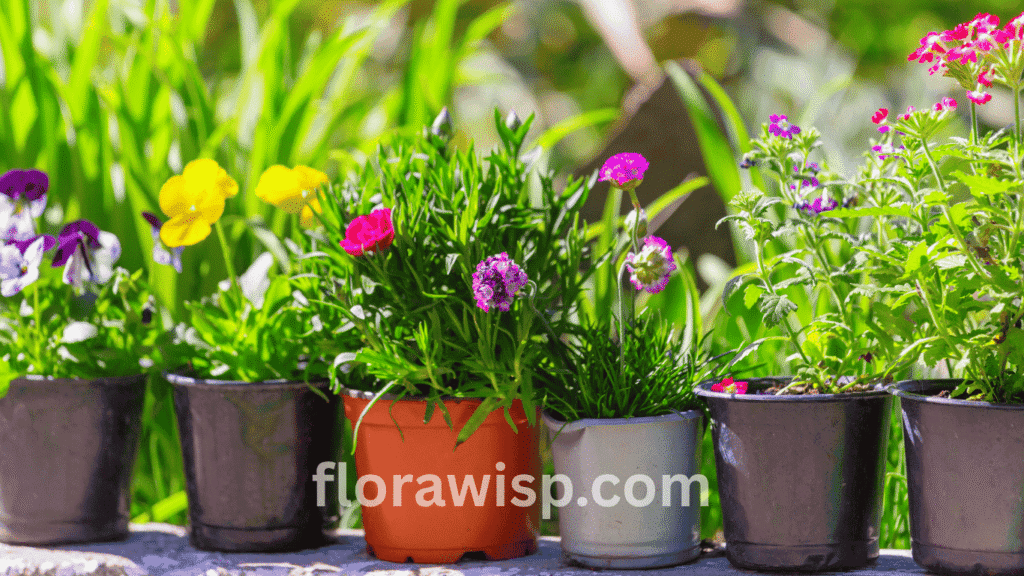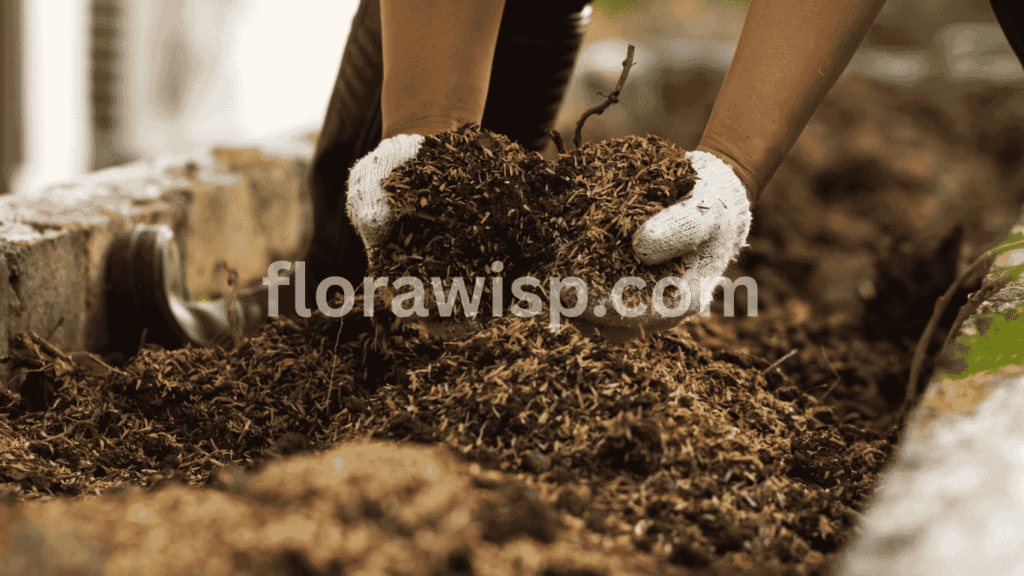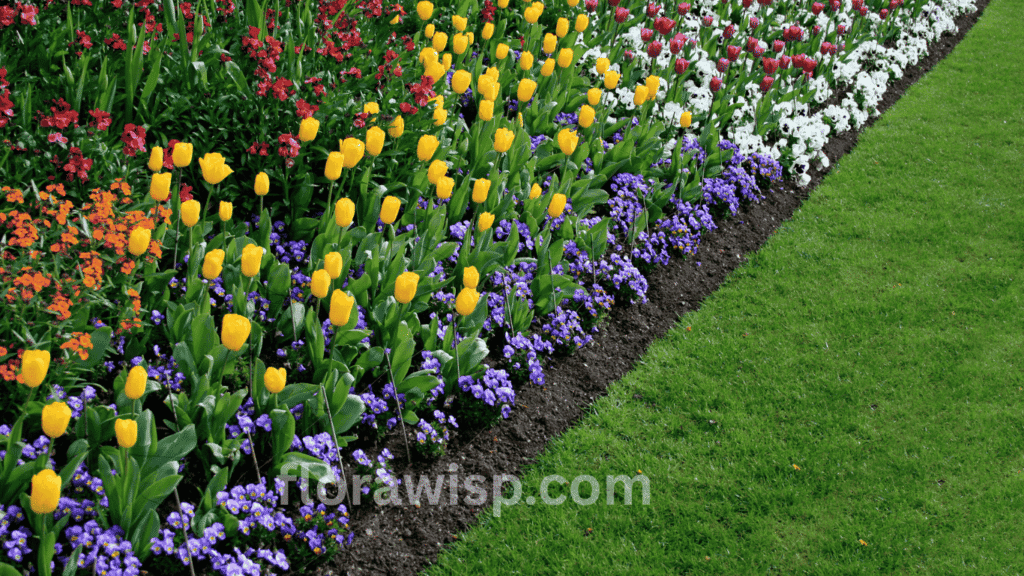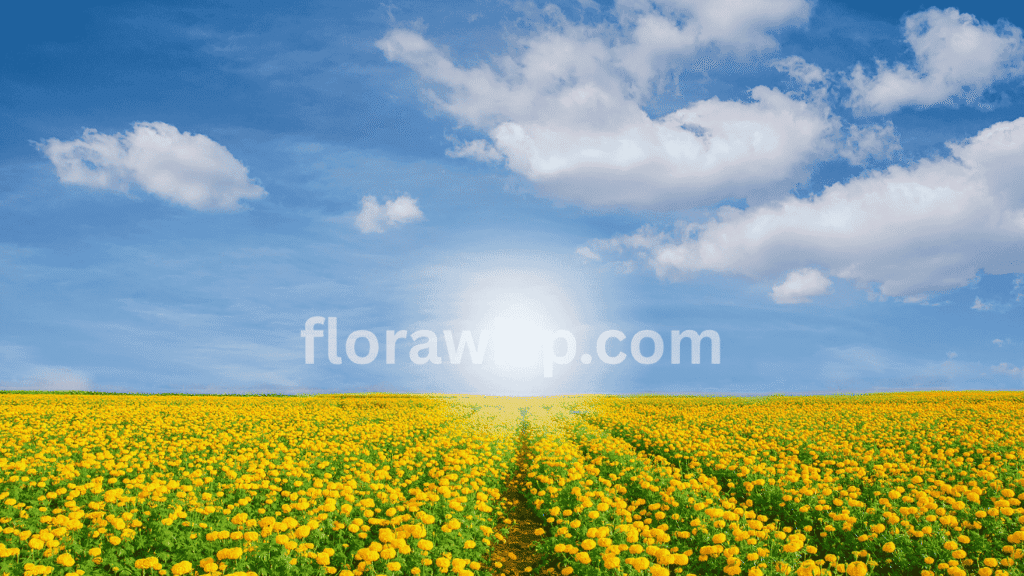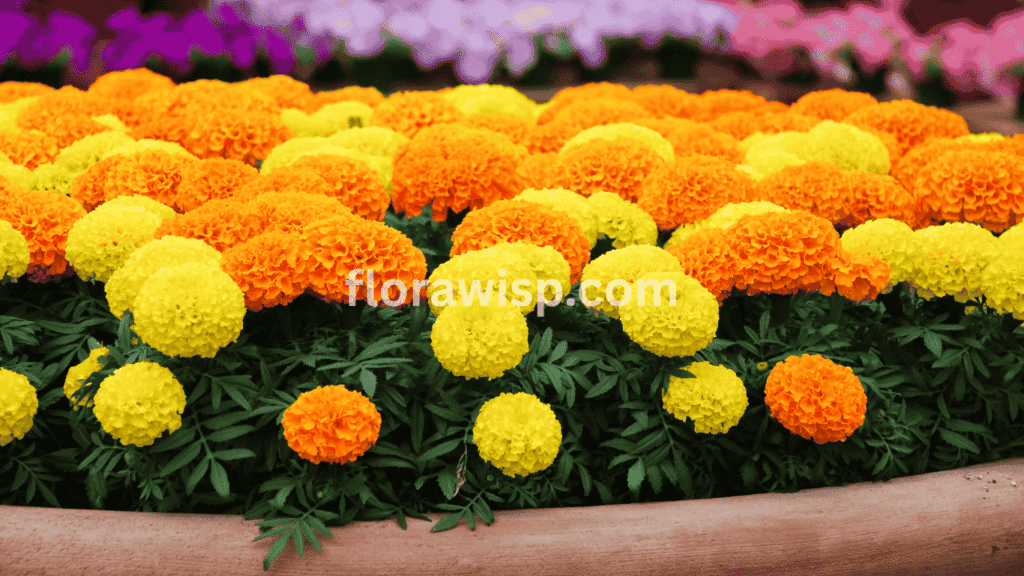Discover expert tips for planting flowers indoors and outdoors year-round. Learn when, where & how to grow stunning blooms. Start your flower garden today!
Planting flowers has always been one of the most rewarding parts of gardening. From watching tiny buds burst into color to breathing life into a dull corner, every bloom feels like a small victory. When I first started, I knew little more than how to water a plant but over the years, I’ve learned what it takes to make a flower garden thrive. Whether you’re working with a sunlit balcony or a shady backyard, this guide is for you.
In This Article
We’ll cover everything from choosing the right flowering plants to planting techniques for seeds, pots, and even mulch. I’ll also share seasonal tips, personal insights, and common beginner mistakes to help you plant with confidence. By the end, you’ll be equipped to grow beautiful flowers year-round no matter your space or skill level. If you’re looking for beginner-friendly ideas, don’t miss my guide on gardening activities for preschoolers a fun way to spark early interest in the garden.
What You Need to Know Before Planting Flowers

Planting flowers starts long before you pick up a trowel. As someone who’s spent years tending blooms across changing climates, I’ve learned that success lies in understanding your site before planting. Here’s what I always check first:
Know Your Growing Zone
Start planting flowers by knowing your USDA hardiness zone first. It tells you what flowering plants can thrive year-round. In my Zone 8b garden, calendulas and pansies bloom through mild winters, while heat-lovers like zinnias wait for late spring.
Track the Light
Spend a full day watching how sunlight moves through your space. I’ve had shade-loving impatiens wilt in spots I thought were shaded. Now, I map my beds by light hours before planting.
Prepare the Soil
Healthy roots are the foundation of success when planting flowers. I amend beds with compost and coarse sand for drainage. Each season, I test pH (aiming for 6.0–7.0). One year, adjusting pH saved my dahlias from stunted growth. If you’re unsure how to build the right soil foundation for vibrant blooms, this Best Soil for Flowers guide will help you choose the perfect mix for your plants.
When Is the Best Time to Plant Flowers?
In most areas, spring and early fall are ideal seasons for planting flowers. I plant petunias after the last frost and switch to mums by mid-October for cool-season color.
Can You Plant Flowers in Mulch?
Absolutely just do it right. I pull mulch aside, plant directly in the soil, and press mulch back loosely around the base. This technique retains moisture while avoiding stem rot.
These foundational steps set the stage for strong, thriving blooms. Don’t skip them they make all the difference.
Choosing Flowering Plants for Every Space and Season

Choosing flowering plants and then planting flowers can feel overwhelming with so many choices, but it all comes down to matching plants to your lifestyle and space. Here’s how I approach it:
Easy Starts for New Gardeners
I always suggest beginners start with zinnias, marigolds, or pansies. They’re tough, colorful, and grow quickly. In my first garden, marigolds from seeds was my confidence booster blooming beautifully even when I made mistakes.
Zinnias
Zinnias are one of my go-to picks for beginners. These cheerful annuals thrive in full sun, sprout quickly, and bloom continuously from summer through the first frost. Their bold colors add instant charm to garden beds, borders, and containers. I especially love them for cut flower arrangements and the way they attract butterflies all season long. If you’re curious about growing best types of zinnias from seed, take a look at my full guide on Zinnia Seeds. It covers everything from picking the right varieties to planting times and care tips for strong, vibrant blooms.
Annuals vs. Perennials
Annuals like the cosmos flowers bloom fast and bright for a single season. Perennials such as echinacea come back year after year with less effort. I mix both in my beds to keep color going all season.
Use Space Wisely
Planting flowers in Compact spaces? Go for flowering house plants like African violets or peace lilies. They thrive on windowsills and bring life indoors. My peace lily blooms reliably in my kitchen window with just filtered light.
Match Plants to Light Conditions
For shade, I rely on flowering plants for shade like impatiens and astilbes. They brighten dark corners and ask for little. A cluster under my maple tree turns heads every season.
Seasonal Swaps
Don’t stop in summer. Fall flowers to plant like chrysanthemums or ornamental kale keep beds looking fresh into the chill. I always replant containers with fall picks in September to extend garden joy.
Thoughtful selection ensures your garden thrives all year indoors and out.
How to Plant Flowers from Seeds and Seedlings

Learning how to planting flowers from seeds is one of the most empowering steps in a gardener’s journey. It connects you to the entire life cycle of a plant. Here’s how I do it:
Pick the Right Seeds
Always choose seeds suited to your region. I source non-GMO cosmos and nasturtiums every spring from a local nursery. They never disappoint, even in erratic weather.
Start Indoors with Intention
Start seeds 6–8 weeks before the last frost. I use trays filled with light seed-starting mix and keep them on a sunny windowsill. Consistent moisture and warmth are key—avoid soggy soil. I once lost a tray of zinnias by overwatering; lesson learned.
Harden Off Before Planting
Once seedlings grow their second true leaves, I gradually move them outdoors for a few hours each day. This hardening off phase builds resilience. It saved my sunflowers during a surprise cold snap last year.
Direct Sowing in Beds
For direct outdoor planting, I loosen soil, remove weeds, and mix in compost. Sow seeds at their recommended depth, water gently, and apply a light layer of mulch.
Great Picks for Beginners
Sunflowers, cosmos, and nasturtiums are foolproof. In my workshops, I always start students with these because they germinate quickly and bloom brilliantly.
With a little care and observation, your seed-grown flowers will reward you season after season. For a complete walkthrough, read our guide on How to Plant Flowers from Seeds and grow with confidence from day one.
Best Indoor Flowering House Plants
Indoor gardening has been a joy in every home I’ve lived in, especially when outdoor space was limited. Some of the best flowering house plants not only brighten up rooms but also lift moods and purify the air. While I mostly keep traditional indoor bloomers like African violets and jasmine, I’ve also experimented with cosmos flower varieties in containers near bright windows—they add cheerful charm even indoors with the right care.
Top Indoor Bloomers I Trust
My go-to choices include African violets, anthuriums, begonias, and jasmine. My African violets bloom almost nonstop in my north-facing sunroom, while anthuriums in my study add tropical flair with minimal effort.
Understand Light Needs
lily bulbs are perfect for low-light corners. East-facing windows are great for begonias, while jasmine thrives in bright morning light. I always observe how light moves in the room before placing new pots.
Humidity and Watering Tips
Begonias adore humidity. I group them with other plants near my kitchen sink to mimic a mini greenhouse. For African violets, I water from the bottom to keep leaves dry and healthy.
Maintenance Routine
Fertilize monthly with a mild, water-soluble formula. Rotate pots weekly for even growth and dust leaves gently to keep them breathing. It’s these small habits that make indoor flowering plants truly thrive year-round.
Planting Flowers That Thrive In Shade

Shade doesn’t mean dull. With the right planting flowers for shade, even low-light corners can become lively and lush. I’ve turned some of my shadiest spots into standout garden features.
Top Shade-Lovers That Work
Impatiens, astilbes, columbines, and foxgloves are dependable choices. I use impatiens for bright color in containers and love the lacy look of astilbes near my ferns. I also often pair them with Hydrangea Flowers for added structure and long-lasting blooms in shady corners.
Understand Soil and Water Needs
Most shade-loving plants prefer moist, well-drained soil. I always enrich shaded beds with compost. During dry spells, I water early morning to mimic forest-floor dew especially for columbines.
Create Layers for Impact
Layering tall and cascading plants adds depth. One dull, north-facing wall of mine became a feature after I mixed hostas, bleeding hearts, and trailing begonias in a tiered layout.
Try Containers for Flexibility
Container gardening is ideal for shady areas. I often plant foxgloves or fuchsias in pots so I can shift them between porch corners until I find their sweet spot.
Mulch Matters Here
In shade, soil tends to stay cooler. A layer of mulch helps retain warmth and steady moisture especially important under trees where roots compete for hydration.
With a little planning, shaded spaces can become your most calming and colorful retreats for your planting flowers.
How to Plant Flowers in a Pot, Bed, or Mulch

Whether you’re gardening on a balcony or have a full backyard, learning how to plant flowers in a pot is essential. Use containers with drainage holes and a lightweight potting mix not garden soil. Place a saucer underneath to catch excess water.
Water your potted flowers when the top inch of soil feels dry. For longer blooms, deadhead regularly and rotate pots to ensure even light.
If you’re working with raised beds or garden soil, make sure to loosen the soil 8–10 inches deep. Mix in compost and a slow-release fertilizer.
And yes, you absolutely can plant flowers in mulch just pull back the mulch, dig a hole, place your flower, then gently replace the mulch around it. This locks in moisture, regulates temperature, and keeps weeds away.
Don’t be overcrowded. Before planting flowers give each plant space to grow roots and spread leaves. The more airflow around them, the healthier they’ll stay.
For a detailed guide on container gardening, including choosing the right pots, soil, and care tips, check out our full article on flowers in pots.
What Flowers to Plant in August and Into the Fall
Late summer is one of my favorite times to refresh flower beds and prepare for the seasons ahead. If you’re wondering what flowers to plant in August, choose varieties that embrace the heat and bridge the gap into fall.
Warm-Weather Winners
Marigolds, salvias, and sunflowers are perfect picks for August. They’re heat-tolerant and continue to bloom well into September. My side bed filled with orange marigolds held strong even through a late-summer drought. If you’re exploring different marigold options for seasonal color, don’t miss this guide on the best Types of Marigold to grow.
Planning Ahead for Fall Color
Start planting flowers fall favorites like pansies, violas, ornamental kale, and asters. These hardy options thrive in cooler temperatures and often keep blooming past the first frost. I always tuck a few violas into containers they perk up my porch into November.
Soil and Watering Tips
The August sun dries out soil fast. I add compost and cover my beds with mulch to retain moisture. Early morning watering has worked best for me. It gives plants a chance to absorb water before the sun peaks.
Bonus Tip: Plan Your Spring Bulbs
By late fall, I prepare the beds for spring bulbs like tulips, daffodil flower, and hyacinths. Tucking bulbs in before the freeze sets the stage for an early-season splash of color.
Seasonal Flower Planting Calendar
| Month | Flowers to Plant |
| August | Marigolds, Salvias, Sunflowers |
| September | Asters, Pansies, Violas |
| October | Ornamental Kale, Mums, Snapdragons |
| November | Spring Bulbs: Tulips, Daffodils, Hyacinths |
With thoughtful planning, you can enjoy color in your garden from summer’s end well into winter’s edge.
Common Beginner Mistakes When Planting Flowers
Even the most enthusiastic beginners can trip up. A few things I learned the hard way:
- Overwatering: Roots rot fast. Always check soil moisture before watering.
- Wrong location: Sun-loving plants won’t bloom in shade, and vice versa.
- Ignoring spacing: Crowded flowers fight for nutrients and airflow.
- Skipping soil prep: Poor soil leads to poor blooms.
If you’re new to gardening, my Gardening for Beginners guide offers a deeper dive into flower gardening for beginners packed with easy steps, tools, and mistakes to avoid.
Keep a journal to track what you plant, where, and how it performs. It helps more than you’d think.
Finally, avoid rushing. Gardening is as much about patience as it is about process. One bloom at a time, you’ll grow into it.
Conclusion
There’s nothing quite like the joy of planting flowers and watching them grow into vibrant, living art. Whether it’s a row of marigolds brightening your yard or a jasmine vine scenting your bedroom, every flower you nurture adds beauty to your world.
Start small, learn as you go, and don’t be afraid to experiment. With the tips in this guide from choosing the right flowering plants to planting in mulch or pots you have everything you need to succeed.
Want to keep your blooms thriving longer? Check out this essential guide on the Best Fertilizer for Flowers to give your garden the nutrition it truly deserves.
FAQs
Q. How to plant flowers for beginners?
Planting flowers for beginners Start with beginner-friendly flowers like zinnias or marigolds. I began with these in a sunny patch near my porch they forgave my early mistakes. Use loose, nutrient-rich soil, space them per the tag, and water when the top inch feels dry. This simple method builds confidence.
Q. When is the best time to plant flowers?
Best time to planting flowers in early spring after frost or in early fall. Annuals like petunias thrive in spring warmth, while fall favorites like mums settle well as the weather cools. Timing depends on your climate Zone 8b lets me stagger both seasons effectively.
Q. Can you plant flowers in mulch?
Yes, but pull mulch aside first. I plant directly in the soil, then gently replace mulch around the plant, keeping stems exposed. This keeps moisture in and weeds out. My impatiens under pine trees thrived with this method all summer.
Q. What flowers to plant in August?
In August, I rely on heat-loving marigolds, salvias, and sunflowers that thrive in the late-summer sun. For fall color, I begin planting violas and ornamental kale mid-month. This timing bridges seasons and fills my beds with blooms into November.
Sources
University of Illinois Extension : Gardening Factsheets
Missouri Botanical Garden : Plant Finder & Care Tips
Gardener, M.Sc. Horticulture
Elara Bennet is a gardening writer from Austin, TX, passionate about sustainable lawns and blooms. Read full bio →


